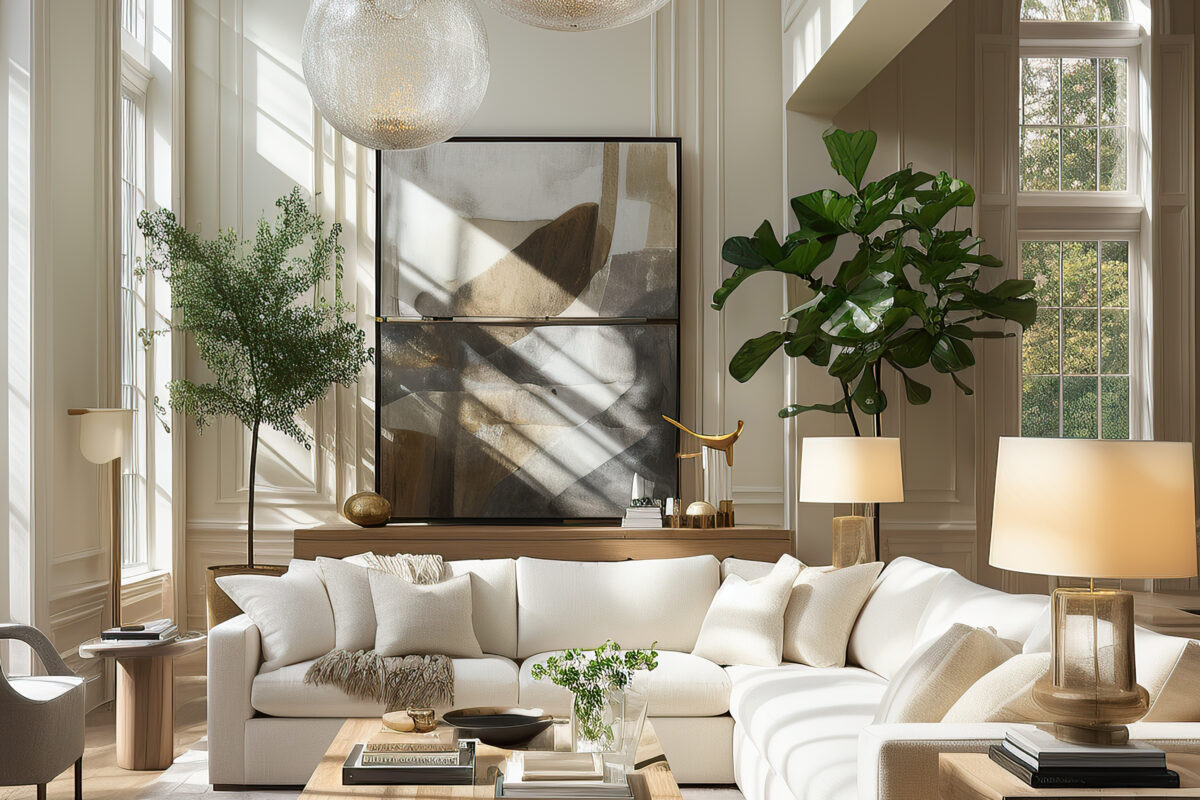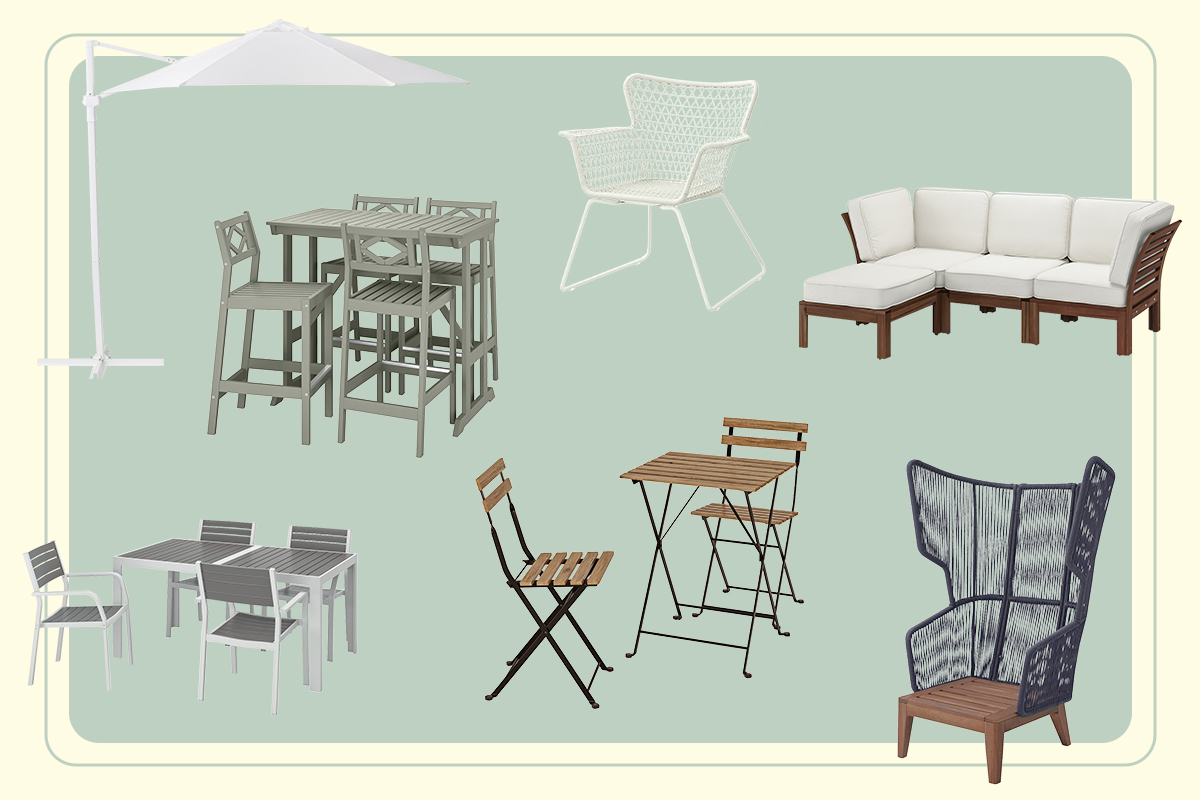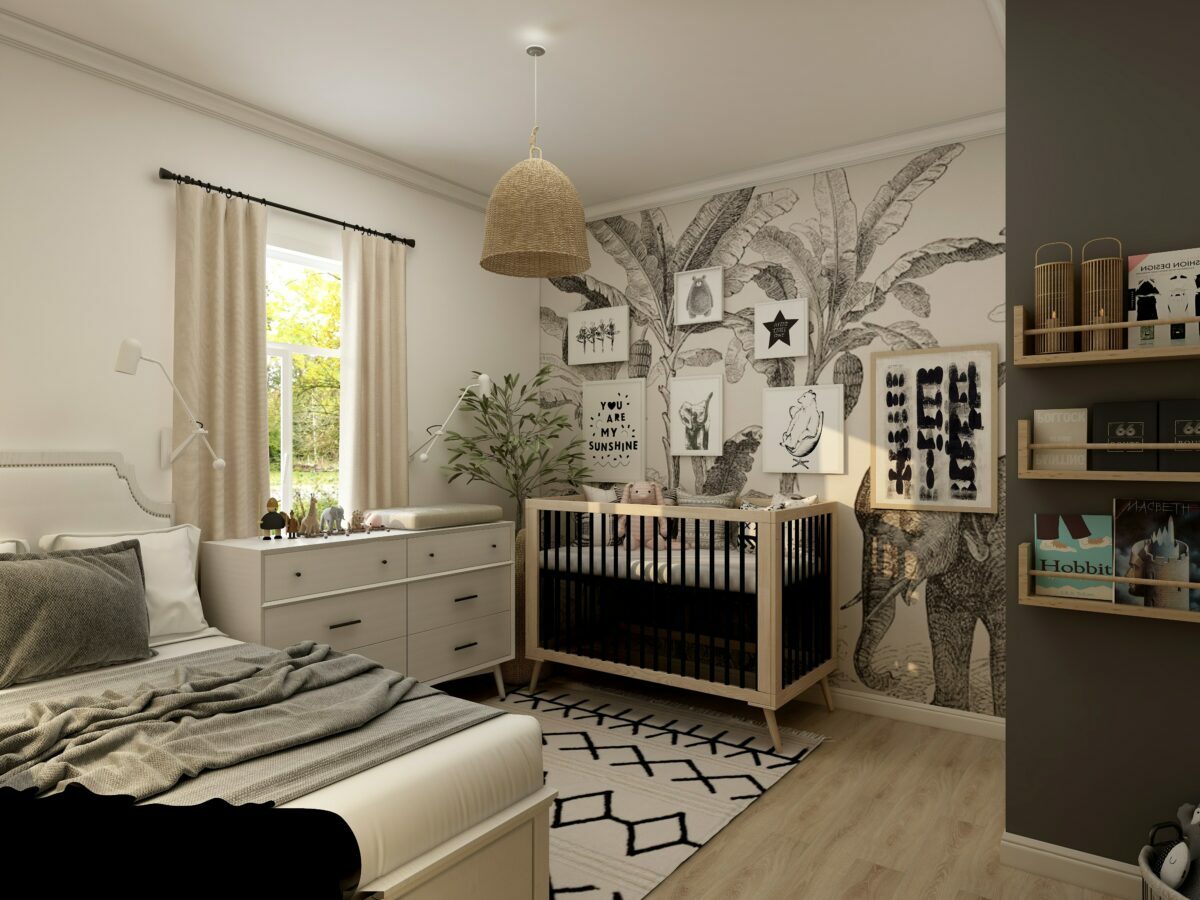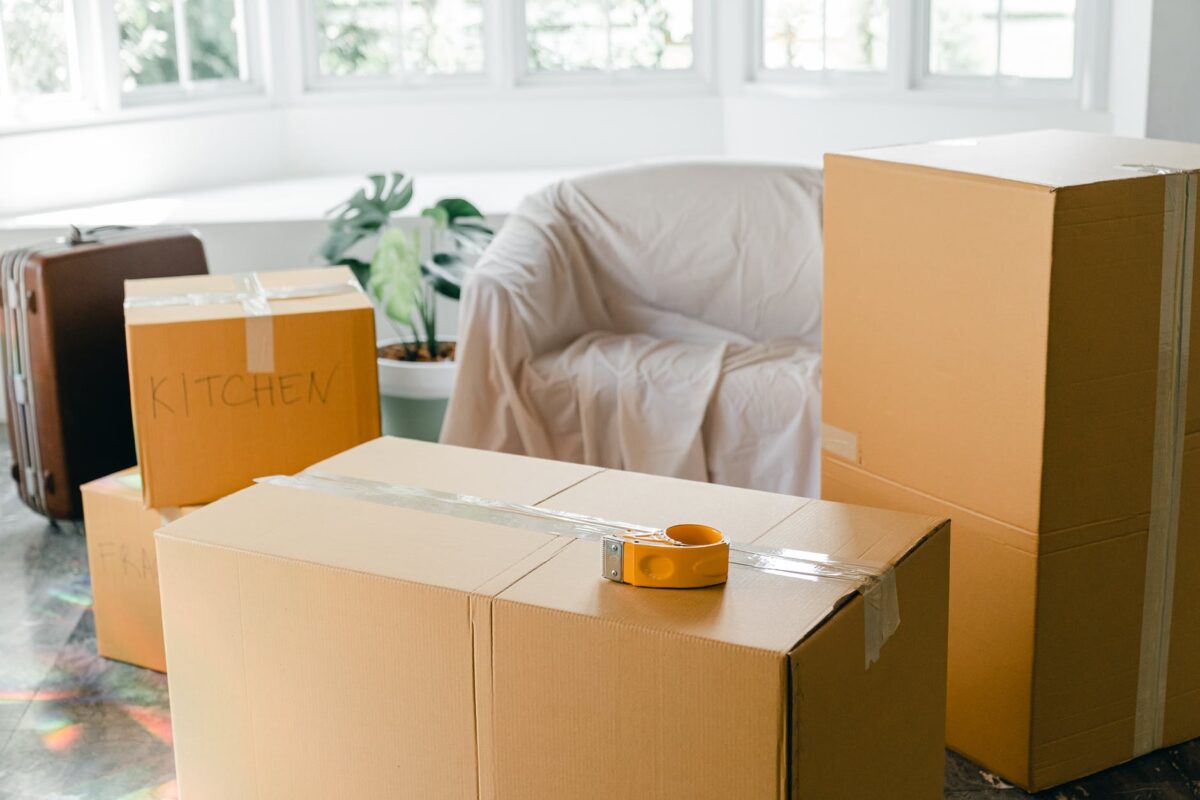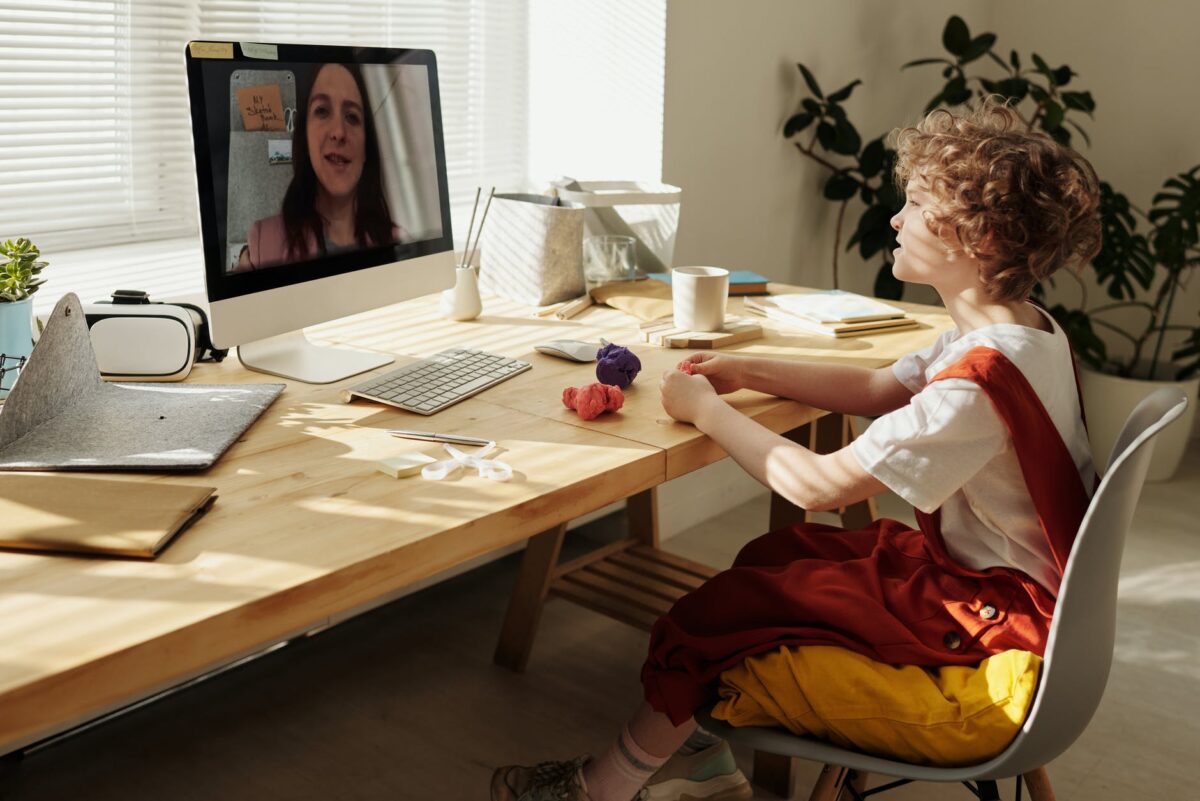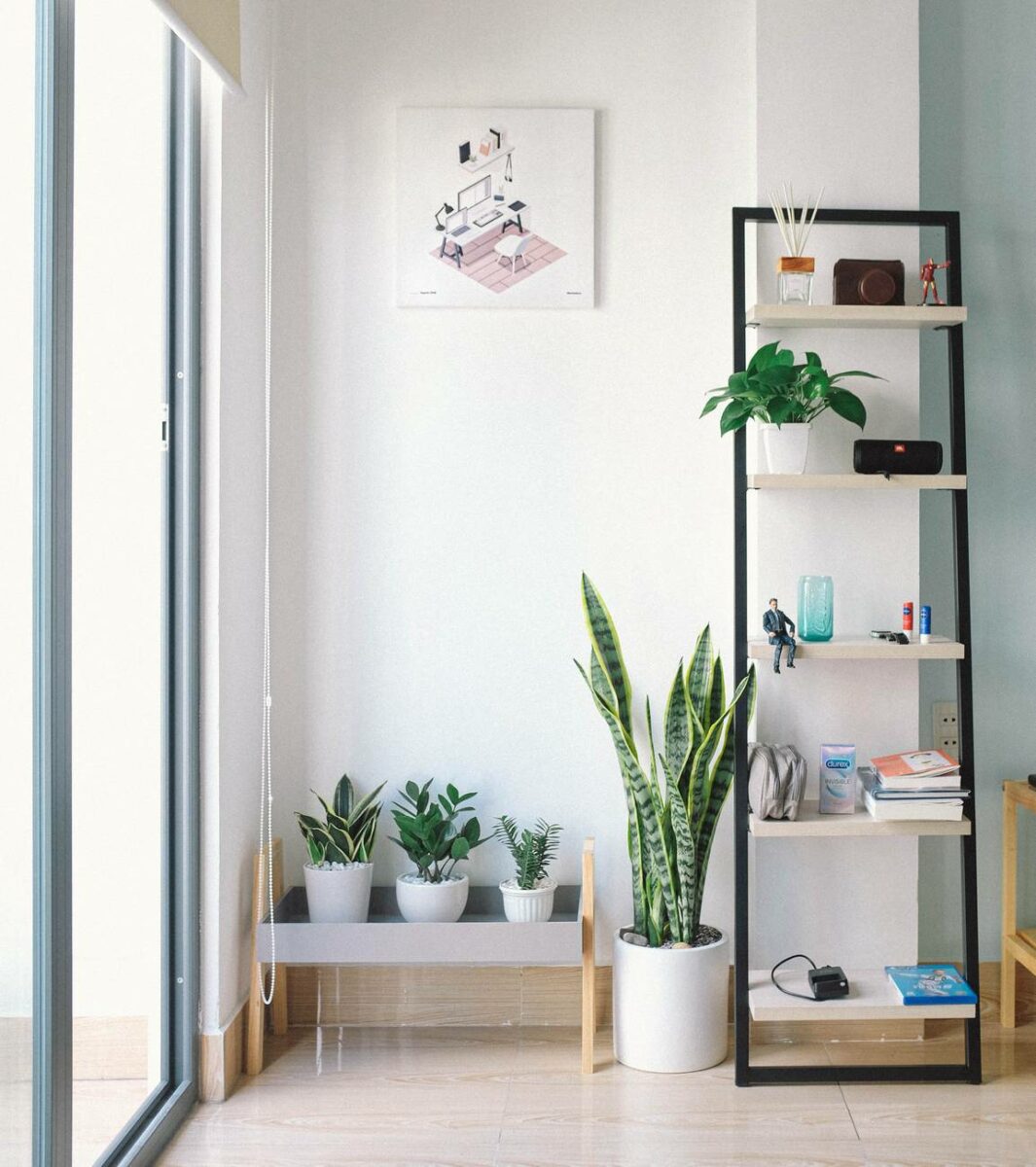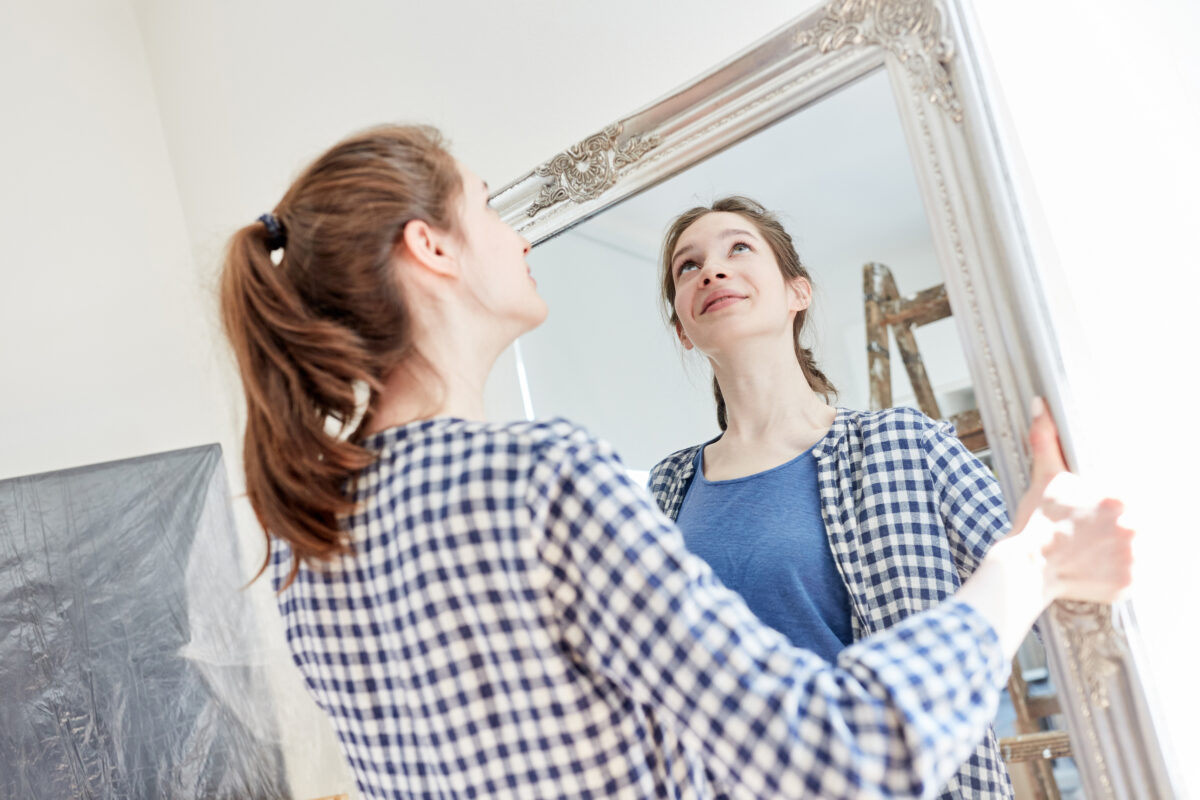Feng shui is an ancient Chinese practice that aims to create harmony and balance between humans and their environment. By arranging elements in a specific way, feng shui seeks to promote positive energy flow—known as chi or qi—in living spaces. A well-designed feng shui living room can bring tranquility, good luck, and overall well-being to anyone who enjoys it regularly!
And it’s not just for your living room. A feng shui approach can also be applied to any room in your house, including your home office. In this guide, you’ll learn tips that you can apply to any space where you spend a lot of time.
Tips to Feng Shui Your Living Room Like a Pro
You can achieve a feng shui living room layout in many ways, depending on your space, but always keep the following tips in mind.
1. Clear Your Space Energetically
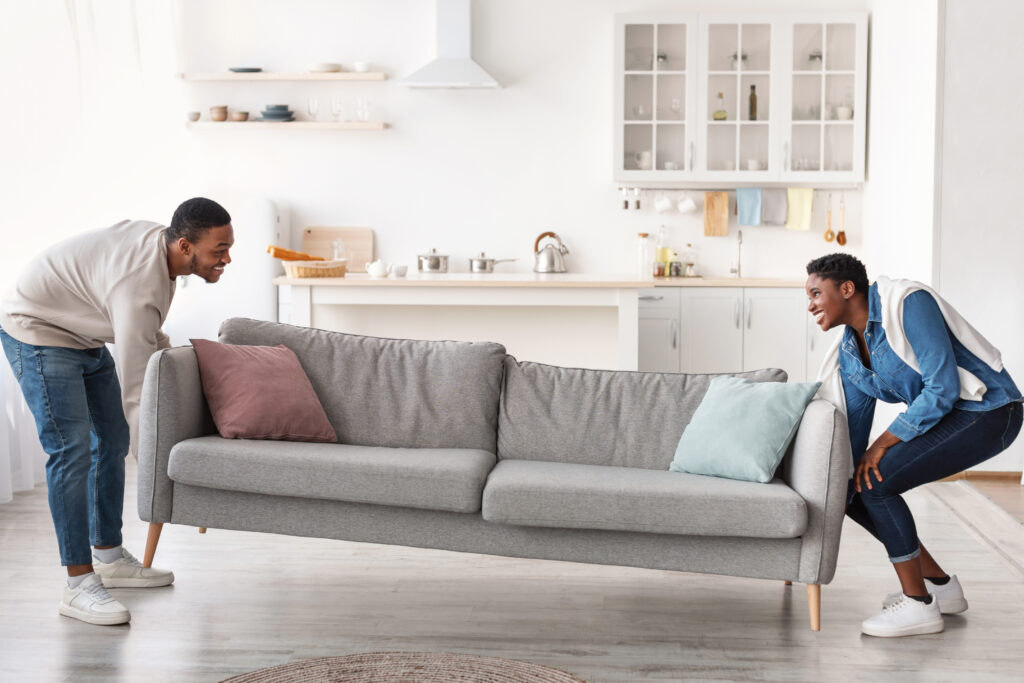
Before implementing feng shui principles, clear your living room of clutter and negative energy. This can mean rearranging furniture for better flow, removing piles of junk that may have accumulated over time, and cleaning floors and surfaces. It can also mean removing reminders of past negative experiences or saging your space, which can be done by spreading smoke from real burning sage or using a sage-infused air freshening spray.
2. Let The Air and The Light In

Natural light and fresh air are essential for good feng shui. Open your curtains and blinds during the day to let in sunlight, as this can boost your serotonin levels, even if you have UV-protected glass that otherwise blocks ultraviolet-B rays (which promote Vitamin D production). If you can get away with letting direct sunlight in without blocking ultraviolet-B rays, all the better!
Sunlight can also help any indoor plants you might have thrive. Just be sure to place your plants in the best spots for their particular species, as different plants have different needs.
3. Layout for Balance and Flow
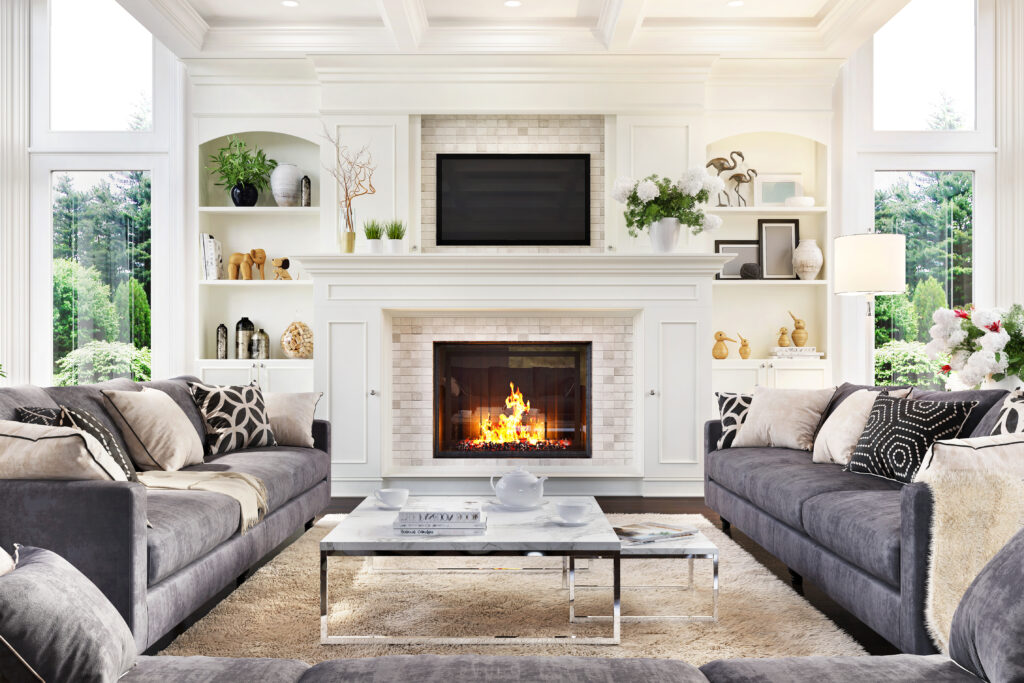
Arrange furniture in a way that prompts conversation and interactions with loved ones. Avoid blocking the flow of energy with large pieces of furniture in the wrong spot—e.g. a massive, dusty couch in the middle of your space’s main walkway. Instead, arrange your furniture in commanding positions that serve both form and function, where they’ll let you see the rest of your space (including entryways) while not directly interfering with any main focal points.
If you need help with living room furniture placement, consider hiring help! Experienced Taskers can safely and effectively move your furniture to create the perfect feng shui layout.
4. Bring The Five Elements
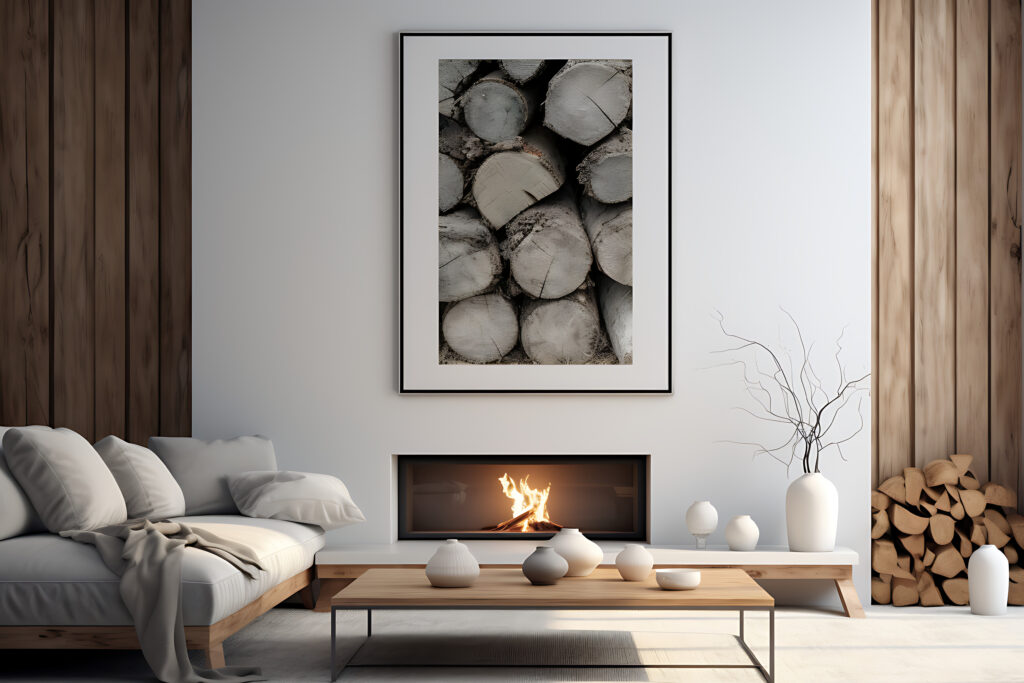
In the Chinese tradition, feng shui incorporates the five elements, which include:
- The wood element
- The fire element
- The earth element
- The metal element
- The water element
These elements are used to create balance and harmony. Add elements of each to your living room through home decor, furniture, and plants. For example, you can try incorporating the following:
- Wood furniture
- A fireplace or candles
- Potted plants
- Metallic accents or wall decorations
- Water features (e.g. a fountain)
Consider how all these items will safely fit into your space, especially if space is limited. Even the smallest spaces can benefit from a variation of these elements!
5. Introduce Color

If you’re unfamiliar with the bagua map (or a feng shui energy map displaying feng shui colors), it’s time that you learn why colors play a significant role in improving your space. Choose feng shui living room colors that resonate with you to create a desired atmosphere. For a calming and relaxing living space, opt for neutral colors like beige, white, or light blue. If you want to add energy and vitality, try incorporating brighter colors like red, orange, or yellow. Just be cautious with these, as they can easily become overwhelming and contribute to stress and anxiety instead of mental peace.
Stuck on feng shui living room colors? Here’s what to know.
- White. This [total lack of] color is represented by the yang side of the yin-yang symbol, which stands for duality, or balance between polarities. White is great for themes of productivity, mental clarity, and completion.
- Black. This combination of all colors is represented by the yin side of the yin-yang symbol. It also represents the water element, which connects to stillness, wisdom, and quiet contemplation. Black is generally best used as an accent color.
- Gray. This neutral color can work in most homes and symbolizes your connection to helpful people in your life.
- Blue. This color connects you to knowledge and family. Its meaning can change depending on the shade and can represent either the wood or the water element.
- Green. This color symbolizes fresh energy, renewal, and regeneration. It can be included in your home in several paint shades or by incorporating houseplants.
- Red. This powerful color protects and clears your energy while also activating and energizing you. Even so, be cautious not to overdo this color!
- Pink. This lighter form of red is associated with partnership and love, and it activates self-love and softness.
- Brown. Browns are part of the Earth tone pallet, which symbolizes grounding, stability, and self-care.
- Yellow. This bright color connects you to your health center, symbolizing high standing and humility.
- Orange. This color combines the stability of yellow and the power of red.
- Purple. Shades of this color connect you with power, prosperity, and abundance.
6. Mirror Placement
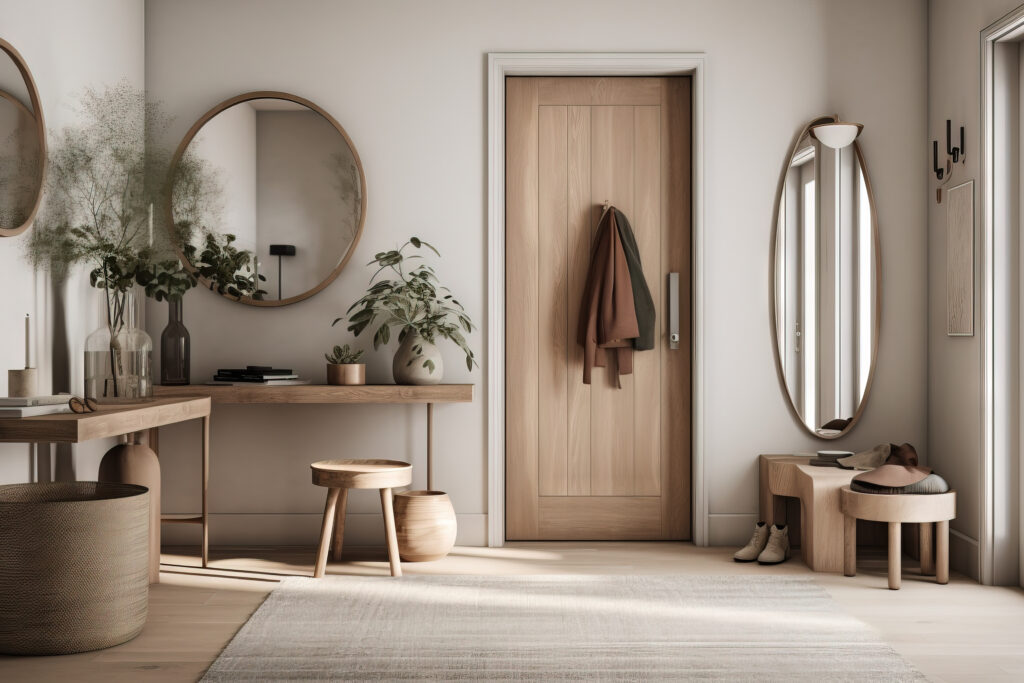
When hanging a mirror in your living room, feng shui matters! Mirrors can be used strategically to enhance feng shui in your living spaces, and you’ll want to place them opposite a window to reflect natural light and create a sense of spaciousness. Avoid placing mirrors directly across from the front door, as this can repel positive energy. Since you may need help mounting large mirrors, don’t hesitate to hire help. This will ensure your mirrors are mounted securely and safely.
7. Add Greenery
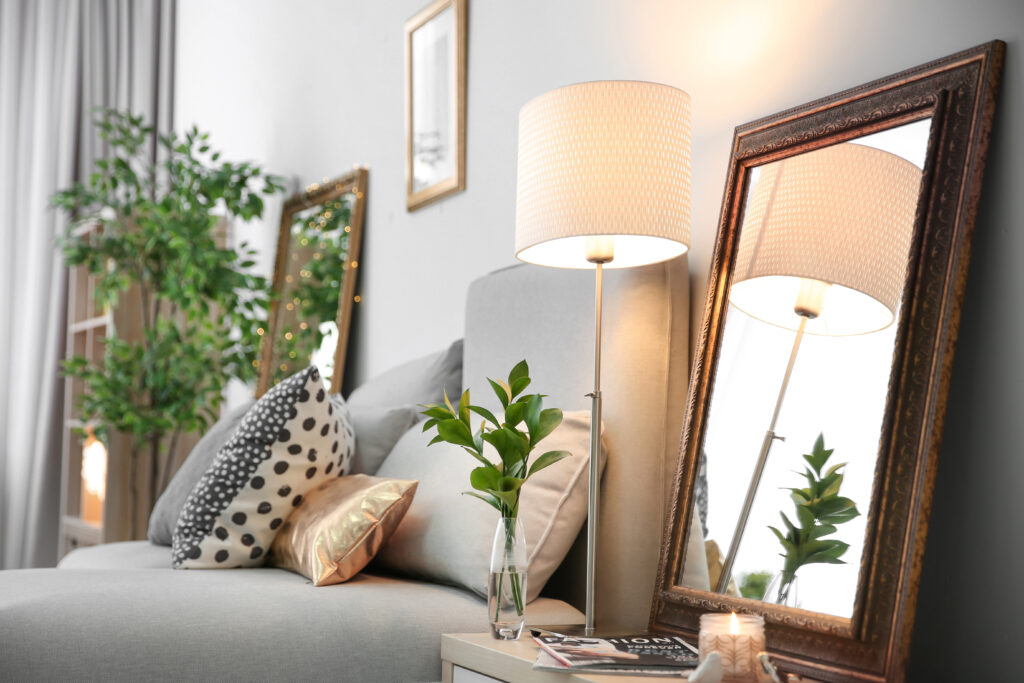
We said it before, and we’ll say it again—houseplants are a great way to introduce life and positive vibes into your feng shui living room layout! Choose plants that thrive indoors and are easy to care for. Place them in areas where they can receive bright, indirect sunlight. When it comes to feng shui, how to arrange plants in a living room matters. You’ll want to avoid placing them directly in front of windows, as this can block the flow of energy.
What to Avoid
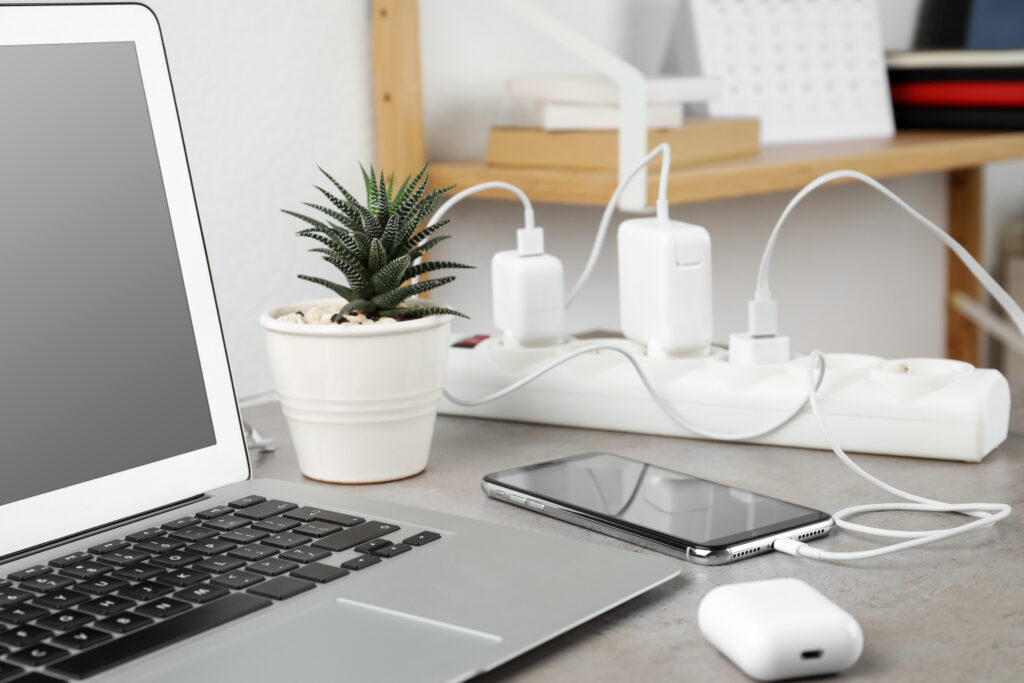
When trying to assess your living room feng shui, here’s what to avoid.
- Clutter. Avoid accumulating clutter in your living space, as it can block the flow of positive energy. Always make it a priority to embrace a minimalist approach, and declutter regularly!
- Too much technology. While technology can be convenient, excessive amounts can create negative energy. Keep electronic devices to a minimum, and avoid placing them in the center of the room. Consider a piece of art instead!
- Too much furniture. Overcrowding your living room with furniture can create a cramped and uncomfortable space. Whether you’re looking at a couch or a coffee table, choose furniture that is proportionate to the size of the room and that allows for easy movement.
Living Room Feng Shui FAQs
Below are some important and common feng shui living room tips.
What are the best colors for feng shui living rooms?
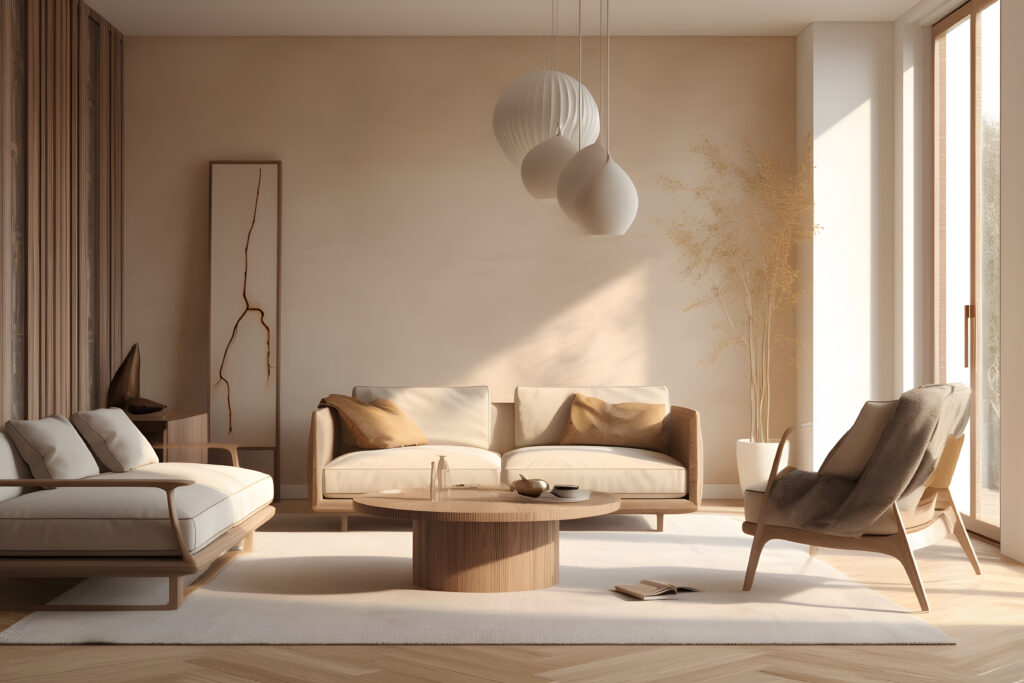
Earthy tones like beige, cream, and light brown are considered good choices for most living rooms, as they create a sense of stability and grounding. You can also incorporate brighter accent colors to add energy and vitality. Ultimately, you’ll want to select a color that resonates most with you—it’s all about room feel!
What is bad for feng shui?
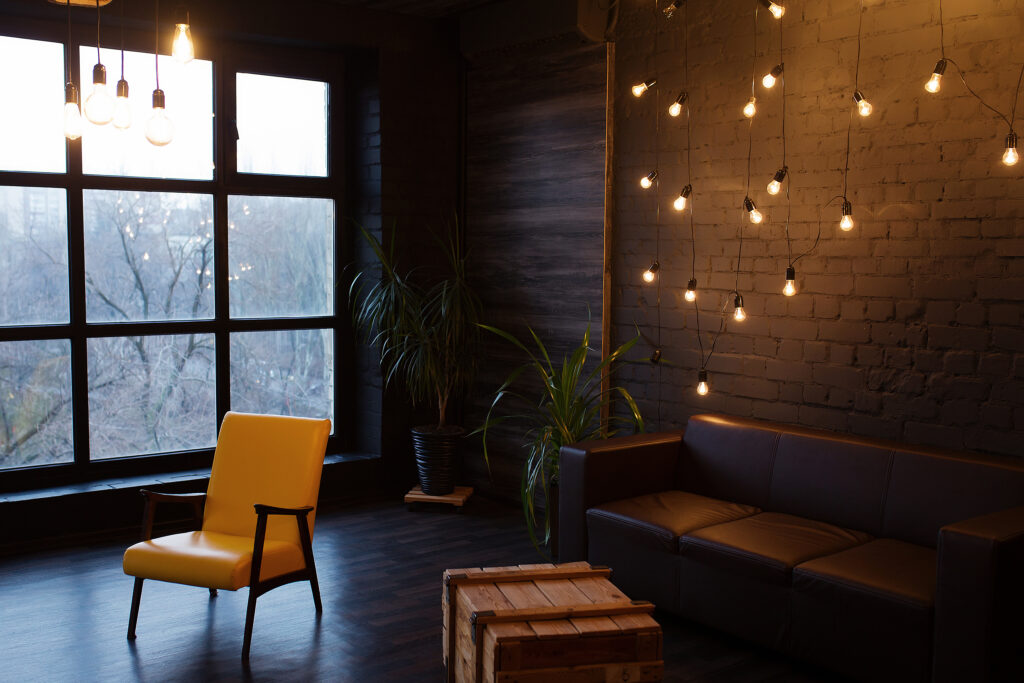
Clutter, sharp corners, and dark and gloomy spaces are considered bad for feng shui. Again, avoid placing mirrors directly across from the front door also, as this can repel positive energy.
Where should I place my couch for a feng shui living room?
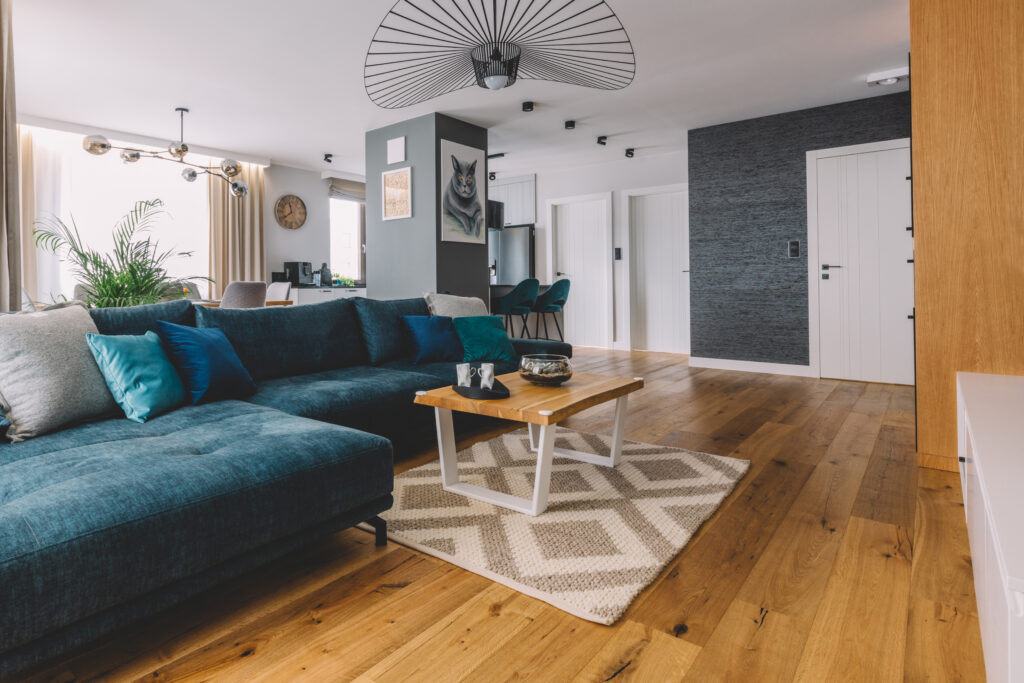
The best position for your couch in the living room is a commanding position, meaning one that allows you to see the front door without being directly in line with it. This position offers a sense of control and security. This also applies to other areas where you’ll commonly sit or spend time!
Hiring Help for Feng Shui
Not sure where to start when putting together your feng shui living room? Taskers with experience in interior design and other skills can offer all the help you need, whether it’s relocating your furniture, painting, or cleaning. Hire a Tasker today!
Last updated on February 29, 2024 by Matt Beier

